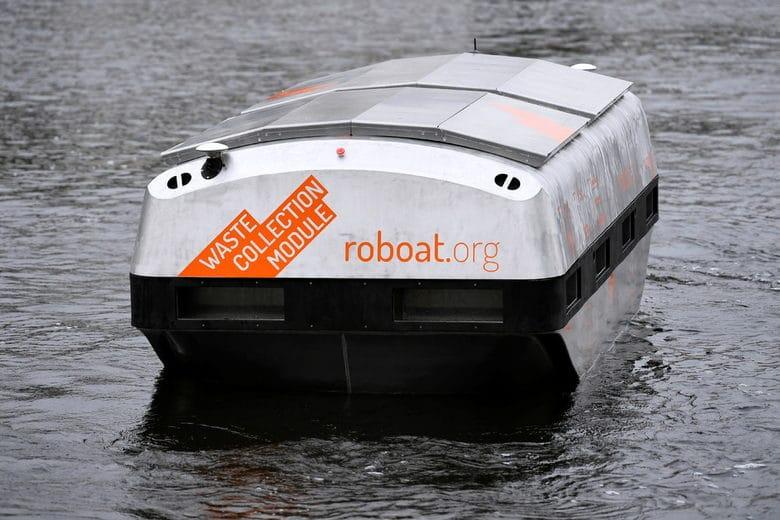Visitors to Amsterdam will soon notice autonomous vessels the size of a small car that silently sail the ancient canals, transporting passengers or transporting goods and rubbish.
This will be the electric Roboat, a more attractive name than “autonomous floating vehicle” for a project that should soon begin test trips. The aim of the project is to improve transport opportunities in the crowded city.
“We have a lot of road traffic and congestion, e-commerce supplies and logistics are clogging the small streets of the city,” said Stefan van Dyck, director of innovation at the Institute for Advanced Development in Amsterdam, who designs and develops Roboat with the Massachusetts Institute of Technology (MIT). .
“At the same time, we have a lot of water under the open sky in the canals … That’s why we developed a self-driving, autonomous ship – to help with the logistics in the city, and also to move people.”
After four years of testing with smaller versions and improvements to the concept, the manufacturers showed the first two functional and life-size robolades on Wednesday. One of the first test applications of the venture will be for the unprestigious, but important, task: garbage collection.
The work is usually done by garbage trucks, but they are not safe on the narrow streets of the city and cause traffic jams. Instead, shore-based robots will act as floating garbage containers, returning to the base when filled.
The city, which supports the project, is considering sites for a pilot garbage collection project, which begins early next year, Van Dyke said.
The robots will need to be digitally connected to the city’s water traffic management to avoid collisions, but Van Dyke said one big advantage is that they don’t need drivers and “see” both at night and during the day. .
“So we can also use the night to collect waste and import construction materials into the city, while, for example, a boat trip is more active during the day,” he said. This also leads to a better distribution of water traffic.
Technical details for Roboat are on the project website, including battery capacity and wireless charging system.
Below the waterline, it looks somewhat like an upside-down drone: two propellers, front and rear, and two thrusters on either side of the bow, allow it to maneuver quickly and land so smoothly that it would embarrass most captains.
Laser “eyes”, GPS systems on the nose and stern and multiple side cameras help with positioning. Roboat programming is done with computers on shore.
The prototype is not yet allowed to enter the normal water traffic of the city with passengers. But in the longer term, the average size and fourth frame of a ship weighing 1,200 kg can be used for passenger, garbage and transport models. It is designed so that several Roboats can be connected together.
The merger of Robats will open up more opportunities for one-off use, Van Dyke said. Such are the creation of a floating concert platform, a temporary bridge, the assembly of a barge or, in marine versions, the formation of a circle of robots to help limit an oil spill.









